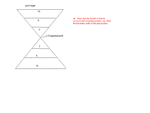Hi,
Not sure if this is the right board to post this general question, but I've nearly finished reading
Van Tharp , Trade Your Way To Financial Fredom and I've read Trading In The Zone by Mark Douglas, and in Tharp's book he says that if you exist a position in stages and leave the remainder of your position for a large gain than this is incorrect, while Douglas states the opposite and recommends that you do this.
For example, Douglas says you have 3 contracts, let's say on the Dow Futures, as soon as you make some profit then close one contract , then wait some more and if you make some more profit close the 2nd contract, thereby adding to your existing profit, then move a trailing stop to break even on the last contract and leave it to capture as much profit potential as possible, so you now have a risk free position.
Anyway, Tharp's does not recommend this, and says it would be better to either exit the entire
position if it meets your exit criteria or let the position accumulate profits until you decide to exit at a suitable stage, e.g a retracement proft exit.
I'm not trying to give exact details here , just wanted to know why Tharp doesn't recommend the first approach, I think it should make more money?
Does anyone have any thoughts on this method of scaling out of a position, I'm sure I've heard that it is a good idea?
Not sure if this is the right board to post this general question, but I've nearly finished reading
Van Tharp , Trade Your Way To Financial Fredom and I've read Trading In The Zone by Mark Douglas, and in Tharp's book he says that if you exist a position in stages and leave the remainder of your position for a large gain than this is incorrect, while Douglas states the opposite and recommends that you do this.
For example, Douglas says you have 3 contracts, let's say on the Dow Futures, as soon as you make some profit then close one contract , then wait some more and if you make some more profit close the 2nd contract, thereby adding to your existing profit, then move a trailing stop to break even on the last contract and leave it to capture as much profit potential as possible, so you now have a risk free position.
Anyway, Tharp's does not recommend this, and says it would be better to either exit the entire
position if it meets your exit criteria or let the position accumulate profits until you decide to exit at a suitable stage, e.g a retracement proft exit.
I'm not trying to give exact details here , just wanted to know why Tharp doesn't recommend the first approach, I think it should make more money?
Does anyone have any thoughts on this method of scaling out of a position, I'm sure I've heard that it is a good idea?

